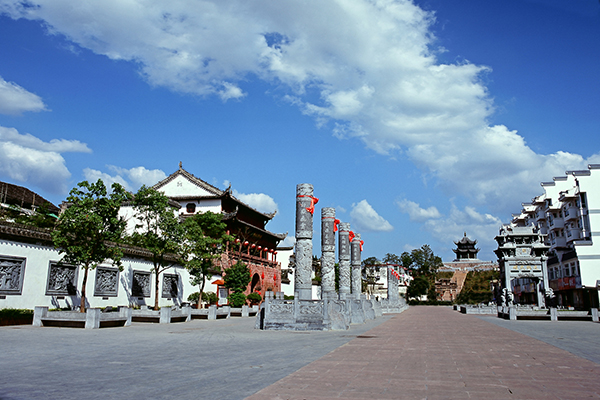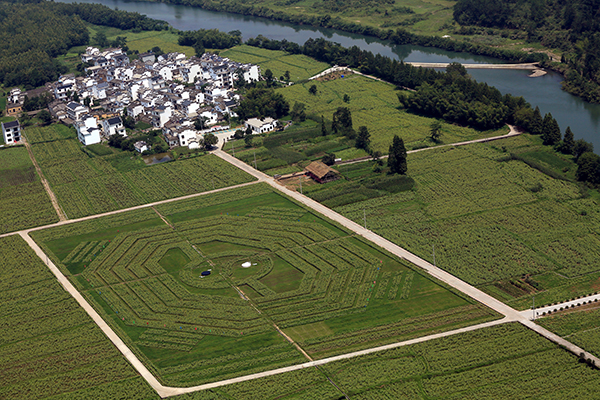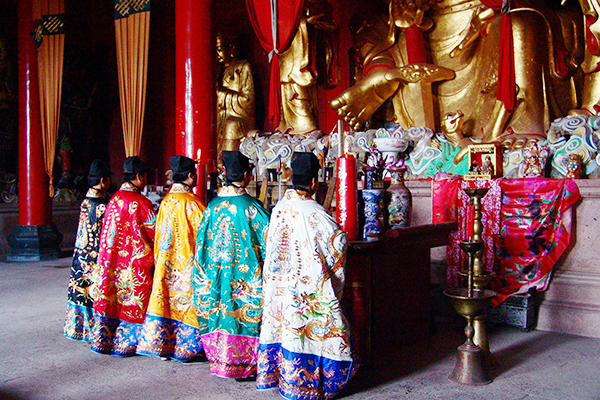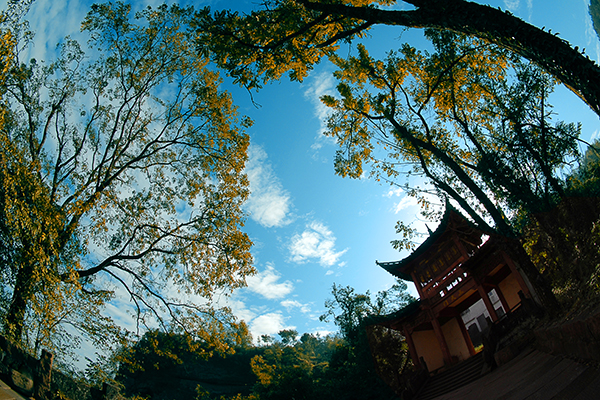
The Museum of the Number One Scholars tells the history of the imperial examination system in ancient China.[Photo provided to China Daily]
Xiuning was the home of many top students during imperial times.
When visiting Huangshan Mountain in Huangshan city, Anhui province, take a side trip to the city’s Xiuning county, where you can enjoy traditional Chinese culture, green mountains and authentic Anhui cuisine.
An attraction in the county, which is 18 kilometers from downtown Huangshan, is the Museum of the Number One Scholars. It chronicles the history of the imperial examination system in ancient China and exhibits antiques such as the scholar’s red robe and hat, inscribed boards and original examination questions and answers.
Xiuning is known as the hometown of Number One Scholars. From 1217 to 1880, there were as many as 19 Number One Scholars (for both liberal arts and martial arts) in the county.
After touring the museum, I went to try the county’s famous dishes and drinks such as salted pork and glutinous rice wine that were shown in A Bite of China, the popular documentary series about Chinese cuisines.
Like many others, I was surprised when I heard about the dish called fried hairy tofu. The chefs put freshly made tofu on bamboo chips for fermentation for three to five days, until white fine hairs grow on them. The hair would be gone when the chefs fry the tofu and scramble them with other ingredients.
The other unusual dish is the smelly mandarin fish, which smells awful but tastes good, just like smelly tofu. The cooks make the mandarin fish into kipper by soaking it in light salt brine under the room temperature for about a week.

Qiyun, the Taoism mountain attracts many famous Taoism practitioners.[Photo provided to China Daily]
The next day, I climbed Huangshan city’s other mountain Qiyun Mountain, which is about 74 kilometers from Huangshan Mountain. The two mountains have been equally famous since ancient times.
Qiyun is one of the top four Taoism mountains in China, and Qiyun literally means it’s as high as the clouds. It has attracted many Taoism practitioners throughout history such as Zhang Sanfeng in Ming Dynasty (1368-1644).
Many well-known ancient scholars and officials such as painter and poet Tang Yin (1470-1523) visited the mountain and wrote calligraphy for it, which were carved on the cliffs or on monuments inside the caves.
Among more than 1,500 carvings, only 538 of them have survived. When I arrived at the Elephant’s Nose Rock, I saw dozens of carvings on the cliffs around me in different styles of calligraphies from different dynasties. Some are vigorous and majestic, while some are elegant and gentle.

At the bottom of the mountain is a sunflower field in the shape of eight giant diagrams.[Photo provided to China Daily]
On the top of the mountain, I looked down to see a green field in the shape of eight giant diagrams at the foot. It was actually a sunflower field. When the flowers were in full blossom in August, many tourists came to take photos and walk in the flower labyrinths.
My guide told me that the seven villages that are scattered at the foot of the mountain are like the seven stars of the Charles’s Wain. The Hengjiang River that runs along the foot of the mountain is in the shape of letter “S”, and together with the two banks, comprise a natural diagram of tai chi. In 2013, Xiuning county received more than 3.34 million visitors, with an increase of 3.35 percent compared with 2012.
To draw more tourists, the local government is repairing the Taoism temple on Qiyun Mountain and constructing a new service center and parking lots, and developing new itineraries for the Number One Scholar culture experience tour.

you can worship the Taoist gods and pray at the temple on the mountain.[Photo provided to China Daily]

the mountain is a great place to seek tranquillity and enjoy Taoism-style architecture.[Photo provided to China Daily]
